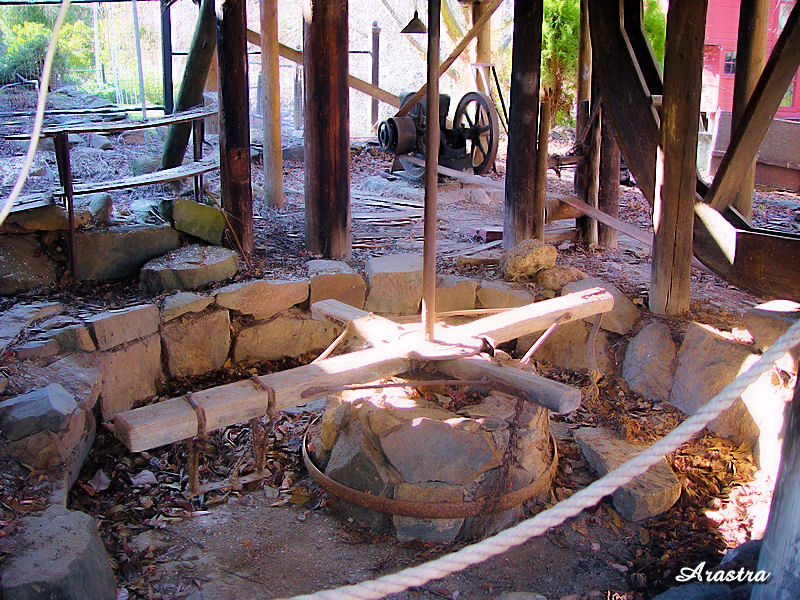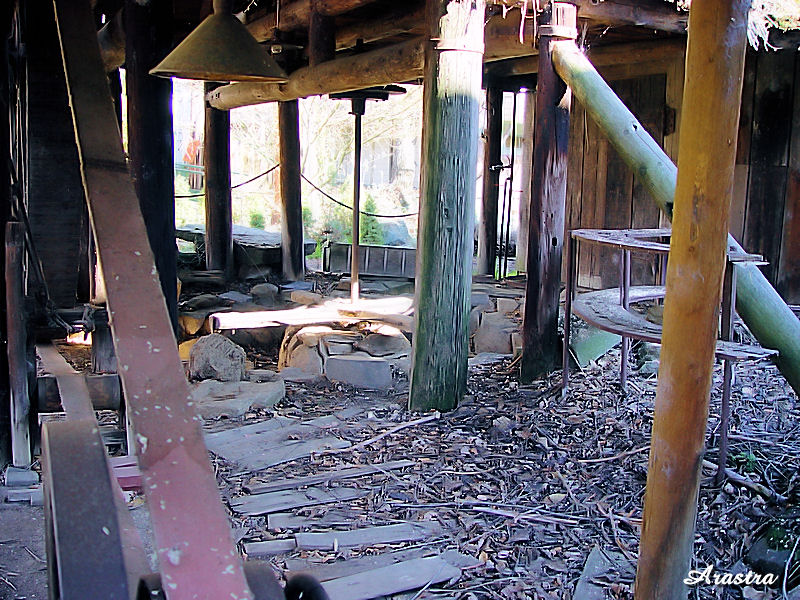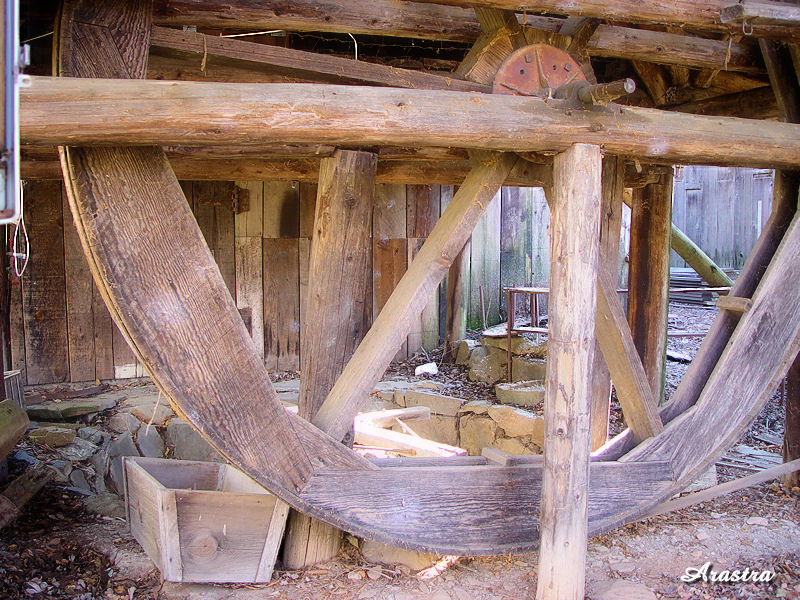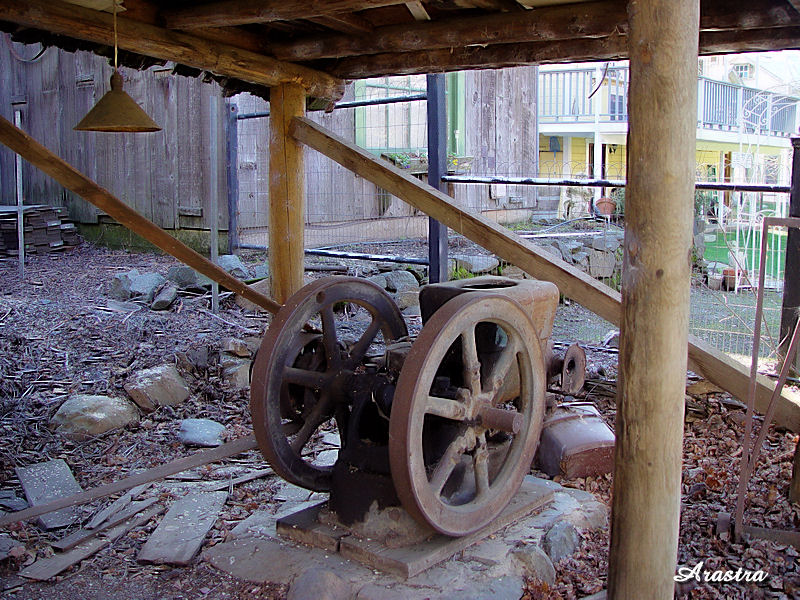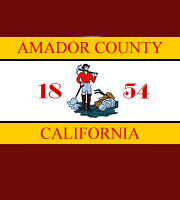





|
|
|
AMADOR CITY AREA TOURS
CEMETERIES |
|
AMADOR CITY LODGING |
|
|
Amador City Arastra, Amador County | ||
|
The arastra was used by the miners to recover the gold by amalgamation with quicksilver. The miner would add clean mercury to the ground ore, continue grinding, rinse out the fines, then add more ore and repeat the process. At cleanup, the gold amalgam was carefully recovered from the low places and crevices in the arastra floor. The amalgam was then heated in a distillation retort to recover the gold, and the mercury was saved for reuse. | ||
This arastra is located in the courtyard behind the Koehler Bakery Building which was resembled to its original condition for historic display. Notice the grinding stones in the bottom of the pit. Although this particular arastra was originally from a site east of Omo Ranch, there are many examples of arasta's being used through out the county in the early part of the gold rush. |
|
|
|
Excerpt Amador Ledger - June 24, 1910 |
||
|
Excerpt Amador Ledger - Jan 31, 1902 This photo showing the arastra being driven by the leather belt that attached to the motor |
|
|
The arastra was extremely valuable to the poor man who, having discovered a gold-bearing vein, wished to transfer some of the metal into his own pocket, at the least possible outlay. They were basically simple to build and with the many creeks through out the area, made it a very good way to prospect gold. This photo showing the main wheel with the leather drive belt. |
|
|
|
As the consolidating of the mines and the larger operations began the stamp mills were used giving the mine owners the capability of milling a larger amount of ore in a days operation. This photo showing the motor that ran this Arastra |
|
Return to our Amador City Tour or click on our Miner to end the tour 
|
||
|
Information, photographs courtesy of the Amador County Archives, The Historical Marker Database, and the Chronicling America Database CONTACT US
|
||
